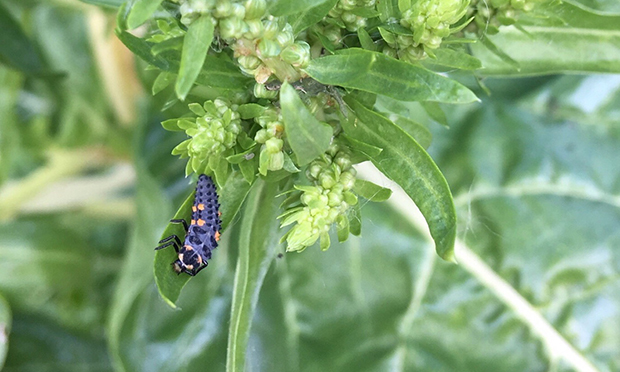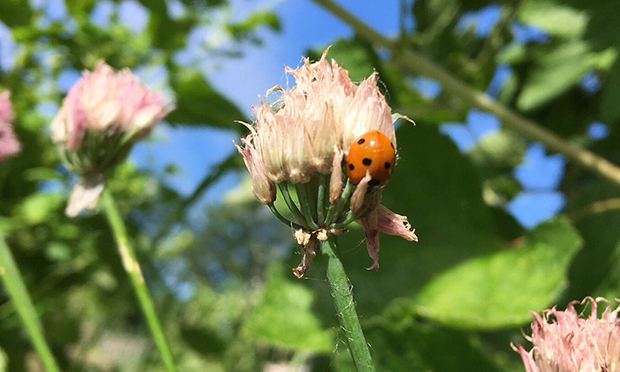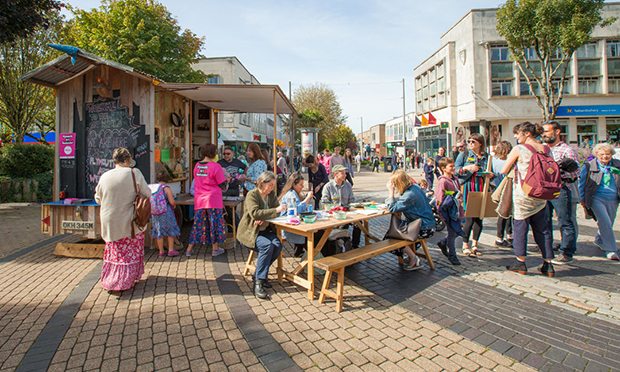The Citizen Gardener: ‘There’s no such thing as a pest’

Destroying ‘pests’ is not the answer
I read an article recently suggesting that we’re being too alarmist about climate change and that for people to change their habits (which is what we need) we must have a sliver of hope and something to do.
So, although I am alarmed, and perhaps not to be trusted, about a big drop in the number of insects recently, I shall try not to dwell on the fear I feel but think about what we can do so that we aren’t frozen with panic.
One of the things we can do is not treat nature as an enemy.
A recent story in the Citizen about an ‘outbreak’ of a ‘toxic’ caterpillar highlights our relationship with nature: that it is to be feared and (probably) destroyed.
Having lost my crop of peas already to some pest and kale to slugs or snails, I know how much I’d like to see these pests out of my life. But destroying them with pesticides is not the answer – for my peas or for the environment – because the ‘pest’ is part of a complex system and using insecticides means also getting rid of a food source for birds and other predators as well as the bacteria, fungi and algae in the soil that support it.
Your pest will also adapt to the pesticide and become resistant.
Far better is to see you and your growing space as part of this network and create an environment where predators can do their job and find and destroy the pest for you and where your soil is rich enough to make your plants healthy and able to resist attack.

Here are some things you can do:
– Encourage predators by providing habitats, food and water.
– If possible grow dense hedging for birds, which will eat aphids, flies, caterpillars, slugs and snails.
– Know your pests. Not all slugs are bad. Some slugs will only eat decaying matter so are important for your soil health. Millipedes and beetles eat slugs and larvae. Hoverflies and lacewing larvae eat aphids, spider mites, thrips, mealybugs, small caterpillars and insect eggs. A useful book for more information is Pests by Charlie Ryrie.
– Grow a variety of plants – some, like nasturtiums, will divert aphids away from your plants; others, like alliums and marigolds, herbs and rue repel or confuse with their scent. Poached egg plant will provide cover for predators so that they can hunt.
– Provide barriers – netting stops birds and horticultural fleece stops some insects.
– Decide how much and what destruction can you live with. I grow extra plants so that I can afford some slug destruction. I will not tolerate blackfly, though, and will squash every last one of them if I can.
– Lastly, allow some wonder into your thinking about insects and marvel at them – before you squash them.
Help spruce up the ‘Rec’
When we lost our community garden we didn’t lose our urge to garden – for ourselves, other people and the environment – so we started thinking of ways we could carry on. One was to move some of our plants to another site, and we have started doing this at St Thomas’s Recreation Ground with a dye bed which is slowly taking shape.

Another idea was for a mobile garden – a Shed on Wheels that could visit places without private gardens and from where we could run workshops and events. Trouble was, to raise funds for this, we needed a permanent space to park the shed which we haven’t got so, as a first step to a Shed on Wheels, we are raising funds to help turn the ‘Rec’ into a more welcoming space for local people.
It is a hidden haven for wildlife but, because of its seclusion, also attracts a lot of anti-social behaviour and I, for one, am sometimes intimidated by this.
So, as July is the month that London celebrates becoming a National Park City, what better time to join us in supporting the revitalising of a beautiful park in the heart of Hackney!
Cordwainers is crowdfunding to bring the people of Hackney together to celebrate this wild but wonderful gem just off one of its busiest roads.
St Thomas’s Recreation Ground was redesigned from a graveyard to a municipal park by London’s first female landscape architect, and it has provided a refuge for people and wildlife ever since.
We want to put on pop-up events to commemorate this and other amazing facts, teach people new skills, revitalise seating, harvest rainwater and renovate the small building on site to provide an outdoor teaching space.
By pledging even the smallest amount (£2!) to our crowdfunder you will be helping to bring this space back to life and make it more accessible and welcoming for everyone in the borough.
And one day we’ll get the Shed on Wheels on the road…
Kate Poland is an award-winning community gardener. She was chosen to be the UK’s first ever postcode gardener in E5 as part of Friends of the Earth’s 10xGreener project. For more information, head to cordwainersgrow.org.uk and friendsoftheearth.uk
